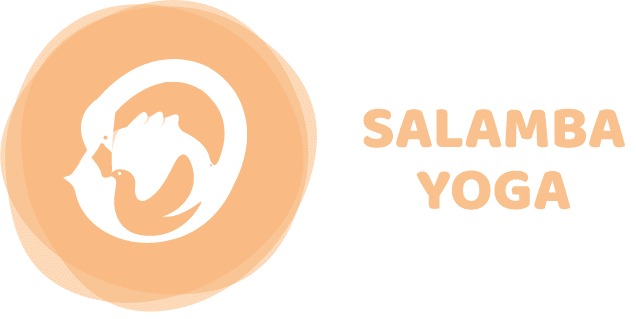A foundational understanding of anatomy is very important for a yoga teacher. Anatomy gives us knowledge about our musculoskeletal system through which movement takes place. Yoga asanas are essentially a series of movements. Developing a deeper understanding of the source of the movement helps create intelligent action instead of a mechanical movement.
In our 200 hours’ yoga teacher training in India and Nepal, we focus on understanding the source of the movements so as to educate our students on the practical application of anatomical knowledge in yoga asanas.
Application of Anatomy in Yoga Asanas
Anatomy is a branch of science that deals with the study of the internal structure of living beings by using the process of dissection. Dissection is done on dead bodies to gather anatomical data and information from a static perspective (Shavasana).
A dead body is incapable of movement, whereas, in yoga asanas, movement plays an important role. To understand movement on yoga asanas we also have to apply biomechanics with the anatomical information.
Since yoga asanas are movements and all the movements in living beings happen at the joint space, it’s important to understand the basis of movements. By understanding the origin of movements we can minimize unnecessary movements, making way for intelligence to reflect in the posture.
The study of anatomy enables us to:
- Increase efficiency of the movement in asana
- Decrease the possibility to incur injury
- Understand imbalances in our body
- Understand the key areas to focus on our students bodies
- Have a deep understanding of impacts of yoga asanas (yoga posture)
Yoga asanas broadly have 3 impacts on a human body. These impacts are as follows:
- Physical impact
- Physiological impact
- Mental impact
A yoga asana should be done by keeping in mind its ability to penetrate through different layers of our physicality and mentality.
The usage of yoga props helps to bring the body in a position to adapt and assimilate the impacts of a yoga asana. Walls, ropes, window sills, blocks, bolsters, chairs, tables, belts, and even stairs can be used as yoga props to bring our bodies in a state of receptivity so that a yoga asana can work on our body and mind.
The usage of a yoga prop is defined by the knowledge of body structure and mechanics. The purpose of prop usage is to bring and restore space in joints and cavities so that the body healing mechanism can be switched on.
Organization of the Biological structure
The journey of biological bodies starts from the chemical level. Atoms such as carbon, oxygen, nitrogen, potassium, phosphorus, hydrogen and sodium maintain life. Atoms undertake a process of combining with each other to form simple molecular structures like that of water and carbon dioxide.
Simple molecules form large complex molecular structures like fats, proteins, carbs, and vitamins. Complex molecular structures form cellular structures. A cell is a basic functional unit of an organism that consists of a nucleus surrounded by cytoplasm. Similar cells group together to form tissue structures that work together to perform different functions. Two or more tissues form organs that perform specific functions in a body for example lungs perform a respiratory function, the heart does cardiovascular activity, etc.
The following is a chart of tissue structure in the human body:
| EPITHELIAL TISSUE | CONNECTIVE TISSUE | MUSCLE TISSUE | NERVOUS TISSUE |
|---|---|---|---|
| 1. epidermal Epithelium |
1. Fibrous CT Loose CT Dense Regular CT Dense Irregular CT |
1. Voluntary Muscle Skeletal Muscle |
1. Central Nervous System (CNS) Brain Spinal Cord |
| 2. Organ Epithelium | 2. Cartilage Hyaline Elastic Fibrocartilaginous |
2. Involuntary Muscle Cardiac Muscle Smooth Muscle |
2. Peripheral Nervous System (PNS) Cranial Nerves Spinal Nerves PNS Divisions |
| 3. Blood Vessel Epithelium | 3. Bone Compact Bone Spongy Bone |
||
| 4. Glandular Epithelium | 4. Blood Red Blood Cells White Blood Cells Platelets |
The movement of a body in a yoga asana is a healthy interaction of all these tissues, hence any yoga asana should include an intelligent interaction of these tissues.
Connective tissues are mainly the decisive factors of the degree of flexibility in an individual.
Ligaments are connective tissue bands that join bone to the bone.
Tendons are connective tissue structures that connect muscles to the bones.
Fascia is a strong and extensible tissue structure that envelopes and penetrates muscle fibers, spindles and muscle bodies. Fascial structures are constantly intriguing physiotherapists, osteopaths, and people involved in different modalities. The more we understand fascia, the more we get to know about the inherent relation between different structures of the body.
Cartilage comes in 3 different kinds of forms:
- Hyaline
- Elastic
- Fibro cartilage
Cartilage strengthens and supports the joints. The ends of the bones at articular joints are covered by hyaline cartilage covering to provide smooth painless movement. Vertebras of the spine have intervertebral discs that are covered by fibrocartilaginous covering. Ears and nose also have elastic cartilage presence in it. Cartilage is avascular (no blood supply and no nerve endings which means no regeneration) and aneural (no nerve endings) in nature.
Bone is a substance that forms the skeleton of the body. It mainly comprises of calcium and minerals. Our skeleton structure is comprised of 206 bones which can be classified as:
- Long
- Short
- Flat
- Irregular
- Sesamoid
This is a sneak peek into the curriculum we follow in anatomical discussions.
Click to get In touch to know more about yoga in Nepal.
Click to know more about our schedule for upcoming yoga programs In goa.
